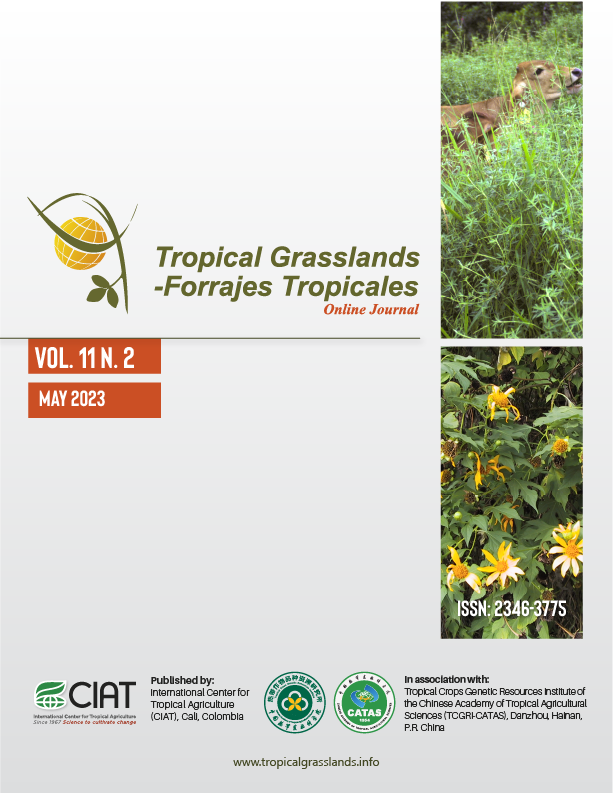Productive behavior and blood chemistry in replacement pullets of White Leghorn layers fed Tithonia diversifolia forage meal
DOI:
https://doi.org/10.17138/tgft(11)160-168Abstract
Tithonia diversifolia foliage meal constitutes a practical alternative for the substitution of conventional feeds in poultry diets, due to its nutritional characteristics. There is limited information on the use of this feed in poultry diets, particularly in the case of replacements for laying hens. In the present study the effect of tithonia (ecotype 10) forage meal on the productive behavior and serum components in replacements of White Leghorn L-33 layers were evaluated. A total of 840 chicken, from 7–126 d of age, with an average initial live weight of 70 ± 10 g were used. The experimental treatments consisted of a control diet (corn-soybean) and the inclusion of 10, 15 and 20 % of Tithonia diversifolia forage meal, with 7 replicates (cages) each with 30 birds in a cage as the experimental unit. No differences (P>0.05) between tithonia levels and the control diet were detected. The batch uniformity was higher with 20 % tithonia in the diet, for birds of 64–126 d of age. The inclusion of the tithonia (ecotype 10) foliage meal did not affect the concentration of total proteins, albumin and globulins in chicken serum. The results obtained suggest that using up to 20 % of tithonia (ecotype 10) meal in the diet of White Leghorn laying hen replacements, between 1 and 18 weeks of age, does not affect the productive performance and health condition of the chicken.
Author Biographies
Ysnagmy Vazquez Pedroso, Departamento Monogástricos, Instituto de Ciencia Animal, Mayabeque, Cuba.
Investigadora Auxiliar departamento Monogastrico
Bárbara Rodríguez Sánchez, Departamento Monogástricos, Instituto de Ciencia Animal, Mayabeque, Cuba.
Investigadora Titular departamento Monogastrico
Lourdes Lucila Savón Valdés, Departamento Monogástricos, Instituto de Ciencia Animal, Mayabeque, Cuba.
Investigadora Titular departamento Monogastrico
Tomás Elías Ruíz Vázquez, Departamento Pastos y Forrajes, Instituto de Ciencia Animal, Mayabeque, Cuba.
Investigador Titular departamento Monogastrico
References
Abad JC; Sarabia J. 2014. Mejora de la uniformidad en recría. Revista AviNews, Barcelona, España. bit.ly/3OuHvDI
Abbas RJ; Abdul-Lateef N; Mehmood A; Jameel YJ. 2018. Haematological and biochemical indices of broiler chicks fed at different levels of Moringa oleifera leaf meal. Biochemical and Cellular Archives 18(2):1931–1936. bit.ly/3MFyEOj
Almeida M; Martínez M; Dihigo LE. 2020. Blood indicators of colostomized broilers which intake Moringa oleifera forage meal. Technical note. Cuban Journal of Agricultural Science 54(1):95–100. bit.ly/3OsTS3k
Almeida M; Martínez MP; Dihigo LE. 2016. Effect of Moringa oleifera forage meal intake on digestive indicators of colostomized broilers. Cuban Journal Agricultural Science 50(4):569–578. bit.ly/3IpVEhy
Almeida M; Savón L. 2011. Efecto de la harina de forraje de Tithonia diversifolia en indicadores fisiológicos y de salud de pollitas de reemplazo de ponedoras. En: Memorias VII Congreso Internacional de Ciencias Veterinarias 4–8 abril, 2011. La Habana, Cuba. ISBN: 978-989-7190-3.
AOAC International. 2019. Official Methods of Analysis. Association of Analytical Chemists, 21st Edition, Washington DC, USA.
Báez-Quiñones N; Rodríguez B; Ruiz TE; Vásquez Y; Díaz-Rodríguez H. 2022. Resultados económicos del empleo de harina de forraje de Tithonia diversifolia en la dieta de diferentes categorías de aves. Tropical Grasslands-Forrajes Tropicales 10(2):149–155. doi: 10.17138/tgft(10)149-155
Buragohain R; Rajkhowa TK. 2019. Growth nutrient utilization and economics of broiler fed Tithonia diversifolia flower meal (TDFM) as substitute of conventional feedstuffs in Mizoram India. Indian Journal of Animal Research 53(3):349–354. doi: 10.18805/ijar.B-3500
Campbell TW. 2012. Clinical chemistry of birds. In: Thrall MA, Weiser G, Allison RW, Campbell TW, eds. Veterinary hematology and clinical chemistry. 2nd Ed. John Wiley & Sons, Ames, USA. p. 582–598. ISBN: 978-0-813-81027-0.
Carranco-Jáuregui ME; Barrita-Ramírez V; Fuente-Martínez B; Ávila-González E; Sanginés-García L. 2020. Tithonia diversifolia meal in diets for first cycle laying hens and its effect on egg yolk color. Revista Mexicana de Ciencias Pecuarias 11(2):355–368. doi: 10.22319/rmcp.v11i2.5090
Di Rienzo JA; Casanoves F; Balzarini MG; Gonzalez L; Tablada M; Robledo CW. 2012. Grupo InfoStat versión 2012. FCA Universidad Nacional de Córdoba Argentina. infostat.com.ar
Doumas BT; Biggs HG; Arends RL; Pinto PVC. 1972. Determination of serum albumin. In: Cooper GR, ed. Standard Methods of Clinical Chemistry. Academic Press, New York, USA. p. 175–188. doi: 10.1016/B978-0-12-609107-6.50022-2
Duncan B. 1955. Multiple range and multiple F test. Biometrics 11(1):1–42. doi: 10.2307/3001478
Fuente-Martínez B; Carranco-Jáuregui M; Barrita-Ramírez V; Ávila-González E; Sanginés-García L. 2019. Effect of Tithonia diversifolia meal on productive variables in laying hens. Abanico Veterinario 9:1–12. doi: 10.21929/abavet2019.911
González-Castillo JC; Hahn Von-Hessberg CM, Narváez-Solarte W. 2014 Características botánicas de Tithonia diversifolia (Asterales: Asteraceae) y su uso en la alimentación animal. Boletín Científico Centro de Museos de Historia Natural de Caldas 18(2):45–58. bit.ly/3oiXha5
Gous RM. 2018. Nutritional and environmental effects on broiler uniformity. World's Poultry Science Journal 74:21–34. doi: 10.1017/S0043933917001039
Gutiérrez-Castro LL; Corredor-Matus JR. 2019. Química sanguínea en pollos de engorde alimentados con harina de Botón de Oro (Thitonia diversifolia) en fase de finalización. Revista CES Medicina Veterinaria y Zootecnia 14:42–52. doi: 10.21615/cesmvz.14.3.4
Gutiérrez-Castro LL; Hurtado-Nery VL. 2019. Uso de harina de follaje de Tithonia diversifolia en la alimentación de pollos de engorde. Orinoquia 23:56–62. doi: 10.22579/20112629.569
Hernández-Jiménez A; Pérez-Jiménez JM; Bosch-Infante D; Castro N. 2019. La clasificación de suelos de Cuba: énfasis en la versión de 2015. Cultivos Tropicales 40(1):a15–e15. bit.ly/43c0W8r
Itzá MF; Ortiz J; Vidales HJ; Olguien HA; Quintero JA; Rodríguez Alarcón CA; Orozco UM. 2011. Características de crecimiento de pollitas de postura en relación al tipo de alojamiento. Pesquisa Agropecuaria Brasileira 46(7):768–771. doi: 10.1590/S0100-204X2011000700013
Jiménez-Moreno E; González-Alvarado JM; González-Sánchez D; Lázaro R; Mateos GG. 2010. Effects of type and particle size of dietary fiber on growth performance and digestive traits of broilers from 1 to 21 days of age. Poultry Science 89:2197–2212. doi: 10.3382/ps.2010-00771
Mahecha L; Rosales M. 2005. Valor nutricional del follaje de Botón de Oro Tithonia diversifolia (Hemsl.) Gray, en la producción animal en el trópico. Livestock Research for Rural Development 17, Article #100. lrrd.cipav.org.co/lrrd17/9/mahe17100.htm
Marques G; Pompei JC; Martini M. 2017. Manual veterinario de toma y envío de muestras. MAPA/OPS/PANAFTOSA, Rio de Janeiro, Brasil. iris.paho.org/handle/10665.2/34527
Melesse A; Tiruneh W; Negesse T. 2011. Effects of feeding Moringa stenopetala leaf meal on nutrient intake and growth performance of Rhode Island Red chicks under tropical climate. Tropical and Subtropical Agroecosystems 14:485–492. bit.ly/43e8g3C
Méndez-Martínez Y; Ramírez JL; Álvarez AR; Leyva L; Pérez Y. 2019. Partial substitution of commercial concentrate for Azolla filiculoides meal in the productive response of Oryctolagus cuniculus. Cuban Journal of Agricultural Science 53:149–159. bit.ly/3pVJtCT
Mesa O; Valdivié M; Rodríguez B; Rabello CB; Berrio I; Couso Z. 2020. Use of diets with Moringa oleifera forage meal for White Leghorn L33 laying hens and replacement pullets. Cuban Journal of Agricultural Science 54:219–227. bit.ly/42Ode7c
Miranda S; Rincón-Reyes H; Muñoz R; Higuera A; Arzaillez-Fischer AM; Urdaneta H. 2010. Parámetros productivos y química sanguínea en pollos de engorde alimentados con tres niveles dietéticos de harina de granos de frijol (Vigna unguiculata) (i) Walp durante la fase de crecimiento. Revista Científica (Maracaibo) 17(2):150–160. bit.ly/
SUhAa
Rivera JE; Chará J; Gómez-Leyva JF; Ruíz T; Barahona R. 2018. Variabilidad fenotípica y composición fitoquímica de Tithonia diversifolia A. Gray para la producción animal sostenible. Livestock Research for Rural Development 30, Article #200. lrrd.org/lrrd30/12/rive30200.html
Roa ML; Corredor JR; Hernández MC. 2020. Physiological behavior of broilers using diets with Tithonia diversifolia and probiotics. Archivos de Zootecnia 69(268):406–417. doi: 10.21071/az.v69i268.5388
Rodríguez B; Savón L; Vázquez Y; Ruíz TE; Herrera M. 2018. Evaluación de la harina de forraje de Tithonia diversifolia para la alimentación de gallinas ponedoras. Livestock Research for Rural Development 30, Article #56. lrrd.org/lrrd30/3/brod30056.html
Rodríguez B; Savón L; Vázquez Y; Ruíz TE; Herrera M. 2020. Comportamiento productivo de pollos de engorde alimentados con harina de forraje de Tithonia diversifolia. Livestock Research for Rural Development. 32, Article #22. lrrd.org/lrrd32/2/brod32022.html
Ross JG; Christie G; Halliday WG; Jones RM. 1976. Determination of hematology and blood chemistry values in healthy six weeks old broiler hybrid. Avian Pathology 5(4):237–281. doi: 10.1080/03079457608418196
Rostagno HS; Albino LF; Hannas HI; Donzele JL; Sakomura NK; Perazzo FG; Saraiva A; Teixeira ML; Rodríguez PB; Oliveira RF de; Barreto SLT; Brito CO. 2017. Tabelas brasileiras para aves e suínos: composição de alimentos e exigências nutricionais. 4ta edição. Universidade Federal de Viçosa. Viçosa, MG, Brazil. bit.ly/3oAL0hp
Ruíz TE; Alonso J; Febles GJ; Galindo JL; Savon LL; Chongo B B; Martínez Y; La O O; Cino D M; Crespo GJ; Mora L; Valenciaga N; Padilla C; Rodríguez B; Muir L; Rivero A; Hernández N. 2017. Evaluación de materiales recolectados de Tithonia diversifolia (Hemsl) Gray en Cuba. En: Memorias IX Congreso Sistemas Silvopastoriles, Cali, Colombia, 6-8 septiembre 2017. p. 486–487. ISBN 978-958-9386-78-1
Ruíz TE; Alonso J; Torres V; Valenciaga N; Galindo J; La O O; Febles G; Díaz H; Tuero R; Mora C. 2021. Evaluación durante la estación lluviosa de materiales recolectados de Tithonia diversifolia (Hemsl.) Gray en la zona de Las Tunas y Granma en el oriente de Cuba. Avances en Investigación Agropecuaria 25(1):75–85. bit.ly/3Ox1t0R
Ruíz TE; Febles G; Torres V; González J; Achang G; Sarduy L; Díaz H. 2010. Assessment of collected materials of Tithonia diversifolia (Hemsl) Gray in the center-western region of Cuba. Cuban Journal of Agricultural Science 44: 285-289. bit.ly/45g6XCY
Savón L; Mora LM; Dihigo LE; Rodríguez V; Rodríguez Y; Scull I; Hernández Y; Ruíz TE. 2008. Efecto de la harina de follaje de Tithonia diversifolia en la morfometría del tracto gastrointestinal de cerdos en crecimiento-ceba. Zootecnia Tropical 26(3):387–390. bit.ly/3MkyTgg
Savón L; Rodríguez B; Vázquez Y; Scull I; Herrera M; Ruíz TE. 2022. Immune response and blood biochemistry in broilers fed tithonia forage meal at the finishing stage. Cuban Journal of Agricultural Science 56(2):127–134. bit.ly/4342pxE
Scott M; Nesheim M; Young R. 1976. Nutrition of the Chicken. Humprey Press, Geneva, NY, USA.
Scull I; Savón L; Ruíz TE; Rodríguez Y. 2022. Componentes químicos y efecto de la harina de forraje de Tithonia diversifolia (Hemsl) en la calidad de la carne de cerdos en crecimiento-ceba. Livestock Research for Rural Development 34, Article #33. lrrd.cipav.org.co/lrrd34/4/3433idan.html
Trujillo A; Escobar A. 2012. Evaluación de la sustitución de concentrado comercial por harina de forrajeras en pollos de engorde Ross. Agroecología: Ciencia y Tecnología 1:6–12. hdl.handle.net/11404/6717
Vázquez Y; Rodríguez B; Savón L; Ruiz TE. 2021. Efecto de la harina de forraje de Tithonia diversifolia en indicadores productivos de reemplazo de ponedoras White Leghorn L-33. Livestock Research for Rural Development 33, Article #110. lrrd.cipav.org.co/lrrd33/9/33110ysnag.html
Verdecia DM; Herrera RC; Torres E; Sánchez AR; Hernández LG; Herrera RS; Ramírez JL; Bodas R; Giráldez FJ; Guillaume J; Uvidia H; López S .2021. Primary and secondary metabolites of six species of trees, shrubs and herbaceous legumes. Cuban Journal of Agricultural Science 5:77–93. bit.ly/3WiFLiU
How to Cite
Downloads
Downloads
Published
Issue
Section
License
Copyright (c) 2023 Tropical Grasslands-Forrajes Tropicales

This work is licensed under a Creative Commons Attribution 4.0 International License.




